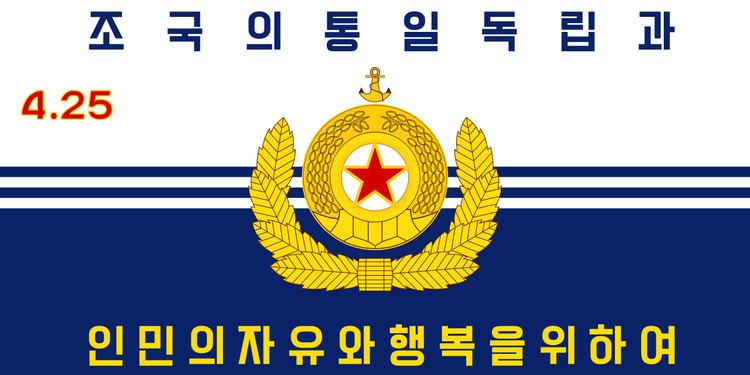 | ||
The history of the Korean People's Navy is short compared to most modern navies. It began with the creation of a "Maritime Security Force" on June 5, 1946. The headquarters for the force was based in the North Korean city of Wonsan, and was operational by July 1946. The headquarters were then expanded and moved to the capital, Pyongyang, for more effective management of seabound traffic, and the forces were renamed Marine Patrols in December of the same year. The Marine Patrol Academy was established in Wonsan in June 1947 in order to train and commission a professional corps of naval officers.
Contents
Initially operating under the North Korean Ministry of Interior, commanding authority was transferred to the National Security Department on August 20, 1949. The introduction of a torpedo squadron into the unit on August 29, made it formally recognized as a naval force, and the date was commemorated as Navy Day until it was changed to honour the June 5th date in 1993.
Operations and engagements
Landing operation near Kangnung and Samcheok
June 25, 1950, North Korean troops invade South Korea. At the morning of 25 June an armed North Korean steamer (ex US transport of 1000t, taken by South Korean communists to the North in October 1949) tried to disembark about 600 troops in 18 miles off Pusan, but it was sighted and sunk by ROK Navy patrol craft Bak Du San ("PC 701"). This was first naval surface action of war. The same time North Korean convoy (2 submarine chasers, 1 minesweeper and 20 schooners) start disembarkation of 4 battalions in Kangnung area; another convoy (2 minesweepers, 1 patrol ship, 1 submarine chaser) - disembarkation of communist guerrilla near Samcheok. ROK minesweeper "YMS-509", patrolling the area near Okgye, tried to prevent disembarkation, but after short battle with North Korean minesweeper "No 31" was forced to withdraw to the south... Totally, in this landing operations North Korean Navy lost 1 transport and 2 schooners (last two was sunk by ROK "YMS-509").
Chumunjin battle
July 2, 1950, at 06:15 of the morning South Korean Support Group (cruisers USS Juneau & HMS Jamaica, frigate HMS Black Swan) sighted a North Korean Navy convoy (four torpedo boats, two motor gunboats and ten motor trawlers loaded with ammunition) heading north from Chumunjin. As the cruisers put on speed to intercept the enemy, the torpedo boats, with more bravery than discretion, turned to attack. Fire was opened at 11,000 yards, and by the time the range had closed to 4,000 one PT had been sunk ("No 24") and one stopped ("No 22"), a third was heading for the beach ("No 23"), and the fourth ("No 21") was escaping seaward. The final score of the engagement was three torpedo boats and both gunboats destroyed, and two prisoners taken by HMS Jamaica. Following this first engagement with the North Korean Navy, also in effect the last, the cruisers bombarded shore batteries at Kangnung.
